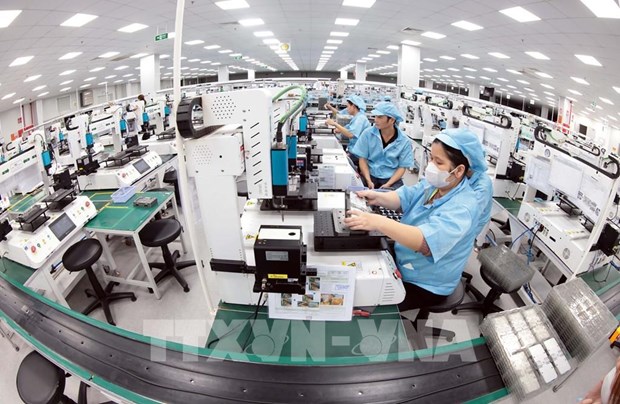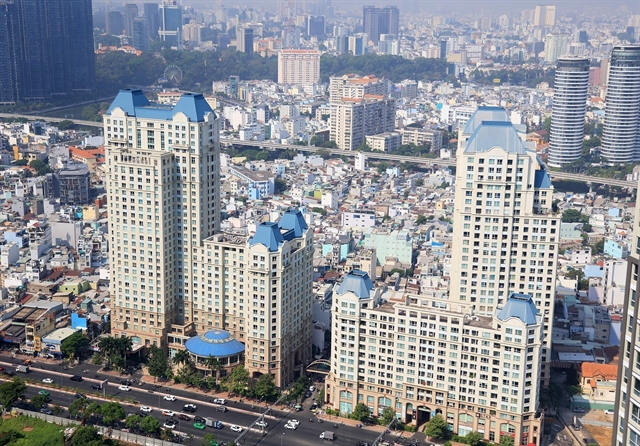.jpg) Economy
Economy

The boom in digital technologies in recent years has speeded up the evolution of the retail industry and changed buying habits. Lê Thị Thùy Trang, director and head of retailer vertical at Nielsen Vietnam, speaks to Việt Nam News reporter Xuân Hương about the status of the industry, its trends and more.
 |
| Lê Thị Thùy Trang, director and head of retailer vertical at Nielsen Vietnam. — VNS Photo |
The boom in digital technologies in recent years has speeded up the evolution of the retail industry and changed buying habits. This requires retailers to continue to innovate to better meet customers’ diverse needs and provide them with better shopping experiences.
Lê Thị Thùy Trang, director and head of retailer vertical at Nielsen Vietnam, speaks to Việt Nam News reporter Xuân Hương about the status of the industry, its trends and more.
How do you see the current status of the retail industry in Việt Nam?
Although traditional trade still dominates in Việt Nam, modern trade has achieved impressive growth to account for a 26 per cent market share.
The number of modern retailers is increasing and store formats are becoming diverse. Consumers buy more from the modern retail channel and expect more from it compared to the traditional one.
The modern retail channel has great potential to develop. The country currently has more than 5,500 modern retail stores, a majority of them convenience stores and minimarts. The number of specialised stores for moms and kids and health/beauty and pharmacies has also expanded quickly.
From my observation, operators of modern retail chains are also studying consumer behaviour and psychology to offer them better products and services.
The modern trade channel has so far focused on big cities. How do you see its potential in rural markets?
A Nielsen survey of the rural market found the market share of modern retail to be still modest, but the high urbanisation rate [in rural areas] brings rural consumers closer to their counterparts in towns and big cities and they have also begun to adapt to modern retail models, especially large store models such as hypermarkets and supermarkets.
Consumer demand has also increased in rural areas. Therefore, the rural market has great potential for modern retail.
The development of digital technologies has greatly changed the way consumers browse and buy a product as well as shopping trends. Do you think local retailers understand the new trends?
There are five consumer shopping trends that influence and shape Việt Nam’s retail market.
The first is convenience. Obviously, Việt Nam is not out of line with world and regional trends in demanding convenient solutions for people’s increasingly busy lives.
Rapid urbanisation and smaller households with a need for smaller portions and pack sizes require more convenient solutions and product lines.
Secondly, with better living standards, Vietnamese consumers have demand for higher quality products.
Thirdly, health and wellness is a top-of-mind priority for consumers in Việt Nam, who tend to choose and prefer products with natural elements and products that are good for their health.
The fourth is the trend of connected consumers. We currently have 35 million people connected to social networks and 33 million Facebook accounts. This shows that Vietnamese have a high level of connection. And we define connected consumers as people who are willing to spend for shopping on the internet.
The number of connected spenders would increase to about 40 million by 2025, and they will account for 50 per cent of the total spending in Việt Nam by then. Producers and retailers need to adopt appropriate measures to attract them in future.
The fifth trend is the trend of future consumers. We refer to the Gen Z generation, who are in the group of 13-19 years of age.
A Nielsen survey showed that this group is knowledgeable and highly engaged in the online world, so they require high standards in their products and services.
Manufacturers and retailers need to quickly grasp consumers’ behaviour, not only with respect to the general scope but also from the perspective of each channel and format, to meet the demands of consumers.
The number of connected consumers has quickly increased in Việt Nam. How does this affect the retail market?
Connected consumers will play an important role in future. Shopping will not be done only in one channel, and consumers will have more channels to access information. Therefore retailers need to identify customer touch points and map out the most effective way to attract them to their products and services.
From our observation, the omni-channel is most the suitable to attract connected consumers. Modern retailers are investing in research and developing strategies for their omni-channel to enable them to approach this group of consumers better and more efficiently.
Do you think Vietnamese retailers make good use of technologies to approach connected consumers?
Domestic and foreign retailers have invested in applications to reach connected consumers. But to use modern technological solutions, it is necessary to consider the willingness of the market, especially the shopping behaviour of consumers.
There are many advanced technologies available globally. Vietnamese retailers are doing research to invest in technology. However, as I said, retailers need to consider the appropriateness in terms of market situation and time to apply them. — VNS




.jpg)




